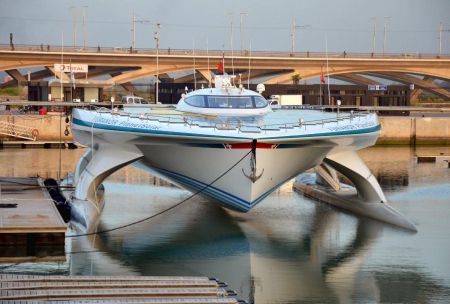
Anyone who has ever scanned the sea’s horizon for a fuel station recognizes the key advantage of solar-powered boating: solar-powered (or green) boats eliminate boaters’ dependence on gasoline. Solar-powered boats are better for the environment, not to mention beautiful (often encased in glass to support the panels and preserve the view), quiet and potentially safer. Though a boating safety course from Boaterexam would still be beneficial for newcomers, personal solar-powered boats travel much slower than their gasoline-powered counterparts, making them less prone to accidents. Below are three exciting developments in the field of green boating.
The Technology
Roof or side-mounted solar panels power these boats, generating up to 1300 kilowatt-hours of clean energy, according to Scientific American. Smaller boats can be run with as little as 140W generated by six cells. The solar energy charges batteries, which in turn run “silent,” emission-free engines. In some cases, surplus electricity can be fed back into a national network, as seen in London’s Serpentine Shuttle, NBC reported back in 2006. This technology has been growing in popularity and use since 2006. Unlike gasoline, speeds are limited by the size of the boat and number of cells, but solar-powered boats can operate indefinitely and even the largest can fully recharge in as little as two days of full sun. Another key difference is the lack of noise and vibrations, which makes for a more comfortable ride that will not disturb nearby wildlife.
The Accomplishments
In 2012, the MS Tûranor PlanetSolar became the first solar-powered boat to circumnavigate the globe. The trip took just over a year and a half, tracing the equator to optimize sunlight hours, FastCoExist explained. Even a week of storms did not affect the boat’s ability to get the power needed to operate. This effort to sail across the world without the use of fossil fuels began in 2010. PlanetSolar, the first iteration, hosted the world’s largest lithium-ion battery and introduced the surface-piercing elevated propellers that would enable Swiss engineer Raphael Domjan to eventually complete the journey. These technological adaptations, like the buoyant double hull, can be applied in many aspects of boat manufacturing to create more efficient vehicles.
The Future of Solar Boating
Though the average aquatic enthusiast may not have access to the nearly 500 square meters of solar panels used on PlanetSolar, green boating through solar power is actually the more affordable option in many cases. Last year, SolarStar23 unveiled plans to sell a solar model ski boat for about $45,000, almost half the cost of a comparable gas-powered boat. Fuel costs are reduced to nothing with solar power, and Syracuse estimates that yearly maintenance would be a mere $100. Battery backups allow for travel on cloudy days, and boats like pontoons (which are most likely to travel during the day anyway) can use electrical power to recharge at night if necessary. Solar power can charge everything onboard, from air conditioning to Bluetooth stereos, Gizmag noted.
As more Americans become concerned both with budget and preserving the environment, solar-powered boats and green sailing will become more popular and prevalent. In terms of industry, solar sails on cargo ships both catch wind and generate electricity, reducing fuel costs and making for more environmentally friendly shipping and transportation.
We use cookies to improve your experience. By continuing to use our site, you accept our Cookies, Privacy Policy,Terms and Conditions. Close X